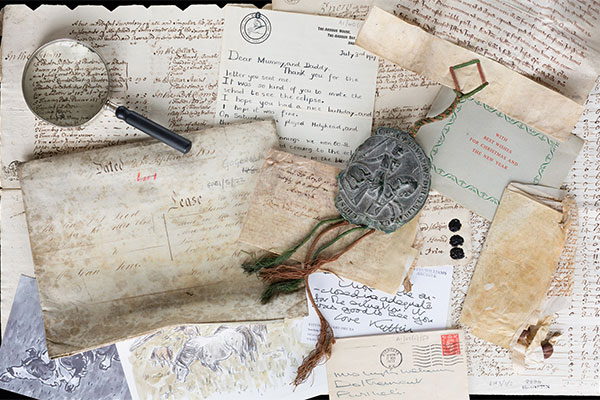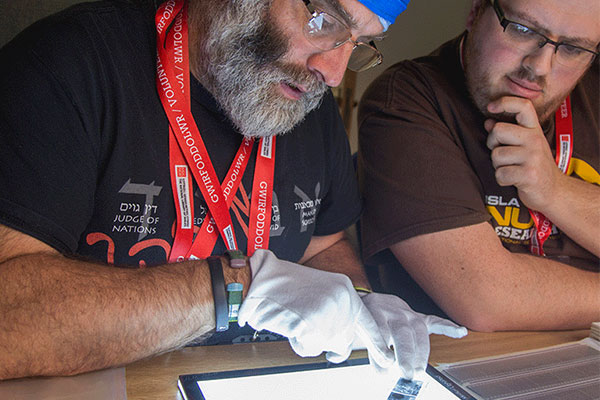Antiquarian interest
By the second half of the 17th century, the manuscript was owned by the antiquary William Philips of Brecon (f. 101v), who died in 1686, and it was then owned by his son of the same name. It was the latter who showed the volume to Edward Lhuyd (1659/60?–1709), who foliated the leaves, and added some notes on ff. 2v and 6v. A few years later, during the 1720s, the manuscript was transcribed by an amanuensis for Moses Williams (1685–1742), and his transcript is now NLW, Llanstephan MS 75. When that copy was made, it appears that only 2 leaves were missing from the original manuscript, and other leaves were intact. The volume then vanished, only to re-appear in the library of the Massachusetts Historical Society in the city of Boston by 1831. The history of its trans-Atlantic crossing is a mystery, although it is probable that it was taken in the luggage of an emigrant.




